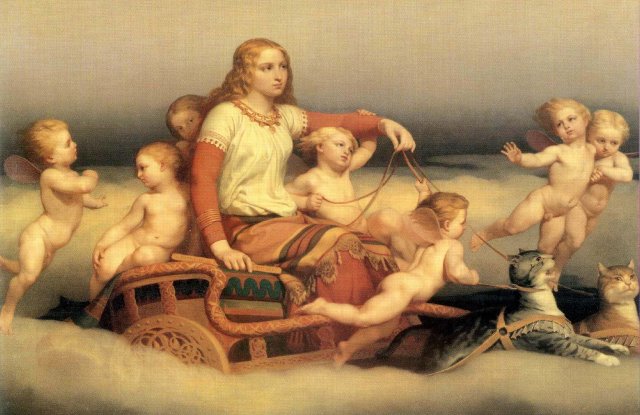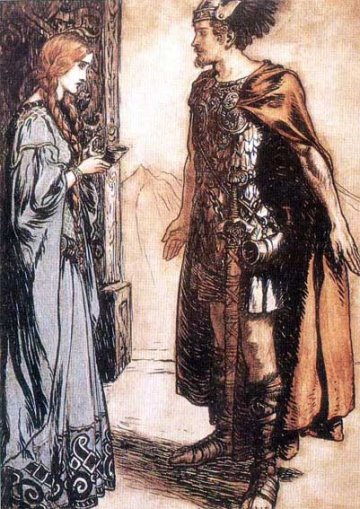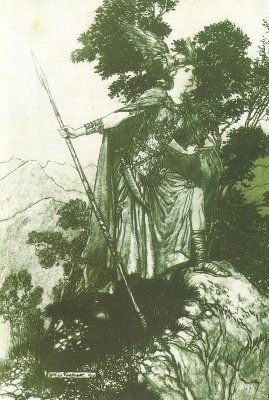Witches
This page should actually be called Witches and Sibyls.
Below are some articles on wise-women that are found in Norse myths, which included: witches, sorceresses and prophetesses.
I have also included women known for their wisdom.

Background
Magic and witchcraft was often used in Norse mythology, not just among mortals. The gods and goddesses also resorted to sorcery.
The Vanir Freyja was the goddess of witchcraft, as well that of love, fertility and war (see Vanir, Freyja). She practices a brand of witchcraft known as seið. She was said to have brought seið from her homeland, Vanaheim, the world of the Vanir, to Asgard. The Vanir was a different tribe of gods to the Aesir.
Seeress or sibyl, on the other hand, were called völva (singular), or völur as plural. They were responsible for divination, such as oracle and prophecy, or other methods of divination. Men who are involved in divination, such as soothsayers or wise men, were called vísindamenn.
According to Song of Hyndla 33 (Hyndluliod), Svarthofdi was ancestor of witches and all seeresses were descended from Vidolf.
In the Icelandic saga, Eiriks Saga Rauda, the seeress, Thorbjörg had earned the title of líilvölva, which means little sibyl, thus was called Thorbjörg líilvölva.
Magicians and wizards called galramenn, which is translated as "sorcerers".
Both Eddas are rather vague about the seið. In the Icelanders' saga, called Eiriks Saga Rauda, we are given an insight of how seið is performed, in the account of the Greenland prophetess Thorbjörg líilvölva. Thorbjörg required a young woman named Gudrid to help her call upon the guardian spirits. Gudrid drew a circle around Thorbjörg, and then chanted the guardian songs, known as Varðlokkur.
So seið was probably a form of incantation or singing.
Odin was the only male god to use this seið; seið seemed to be restricted to women and goddesses.
But Odin had not only used seið. Odin was also the master of runic magic. The use of rune can be used to create powerful wards. Rune magic was not restricted to certain gender.
Odin was the lord of Valhalla, the hall of the dead heroes. He has the Valkyries serving him, choosing the warriors slain in battle. The Valkyries also possessed powers to use runic magic. There is a separate page for the Valkyries.
The Valkyrie Brynhild (or Sigrdrifa in Sigrdrifumal) knew of the magic using runes, which she revealed to the hero Sigurd; see Brynhild.
In Norse myths, the names of witches are not always given. Some witches are benevolent, while others are malignant.
One nameless sorceress helped the heroine Signy, so that the heroine would look like the witch. Signy changed shape so that she could sleep with her brother Sigmund, and bear a son Sinfjotli, who would be strong enough to help her with revenge against Signy's husband. See Sigmund and Signy in the Volsunga Saga.
In Havamal 113 (from Poetic Edda), Odin warned Loddfafnir that –
...in the arms of a witch you should never sleep,
so that she charms all your limbs;
she'll bring it about that you won't care
about the Assembly or the king's business;
you won't want food nor the society of people,
sorrowful you'll go to sleep.
translated by Carolyne Larrington
Also in Havamal, Odin tells Loddfafnir that he knew of eighteen spells. For more about Odin and his magic, read the Search for Wisdom.
Related Pages
By Jimmy Joe










